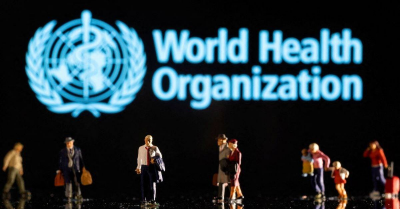Reuters-WHO asks China for details on outbreaks of respiratory illness
November 23, 2023 3 min 636 words
这则报道揭示了中国爆发呼吸道疾病的情况,引起了世卫组织的关切。中国卫生部门称这是例行检查,但外界对早期新冠病例透明度提出质疑。中国和世卫组织均曾因对2019年底武汉新冠疫情最早报告的透明性遭到质疑。现在,世卫组织再次要求中国提供呼吸道疾病爆发的详细信息。报道提到,中国解释疾病增加是因为解除COVID-19限制和季节性上升,这与其他国家在解封后经历的情况相似。对此,我认为中国和世卫组织需确保透明度,及时分享信息,以维护全球公共卫生。这也是对早前疫情处理的一种检验,需要彻底的调查和信息分享,以防范疫情再度扩散。
The World Health Organization (WHO) has asked China for details on an increase in respiratory illnesses and reported clusters of pneumonia in children, which its China office on Thursday called a "routine" check.
Chinese authorities from the National Health Commission held a press conference on Nov. 13 to report an increase in incidence of respiratory disease.
Authorities attributed the increase to the lifting of COVID-19 restrictions and the circulation of known pathogens such as influenza, mycoplasma pneumoniae, a common bacterial infection that typically affects younger children, respiratory syncytial virus, and the virus that causes COVID-19.
Both China and the WHO have faced questions about the transparency of reporting on the earliest COVID-19 cases that emerged in the central Chinese city of Wuhan in late 2019.
On Wednesday, the WHO said groups including the Program for Monitoring Emerging Diseases reported clusters of undiagnosed pneumonia in children in north China. The WHO said it was not clear if these were associated with an overall increase in respiratory infections previously reported by Chinese authorities or separate events.
The WHO said it had asked for additional epidemiologic and clinical information as well as laboratory results from the reported outbreaks among children, through the International Health Regulations mechanism.
It has also asked China for further information about trends in the circulation of known pathogens and the burden on health-care systems. The WHO said it was in contact with clinicians and scientists through its existing technical partnerships and networks in China.
WHO China said it was "routine" to request information on increases in respiratory illnesses and reported clusters of pneumonia in children from member states, such as China.
The global agency decided to issue a statement on China to share available information, as it received a number of queries about it from media, WHO China said in an emailed statement.
Undiagnosed pneumonia was not mentioned at last week's press conference, according to a transcript, but one speaker said everyone felt like there had been an increase in respiratory illnesses this year compared with three years ago.
The speaker said that global monitoring for mycoplasma pneumoniae had been at a low over the past three years and outbreaks were cyclical, occurring every three to seven years.
The rise in respiratory illnesses comes as China braces for its first full winter season since it had lifted strict COVID-19 restrictions in December. Many other countries saw similar increases in respiratory diseases after easing pandemic measures.
"It is just a relatively large seasonal surge, perhaps partly due to chance and partly because there's a bit of 'immunity debt' from the lesser winter surges in the last three years," said Ben Cowling, an epidemiologist at Hong Kong University.
China's National Health Commission did not immediately respond to a request for comment.
Since mid-October, the WHO said northern China had reported an increase in influenza-like illness compared with the same period in the previous three years.
It said China had systems in place to capture information on trends in illness incidence and to report that data to platforms such as the Global Influenza Surveillance and Response System.
In recent days, media in cities such as Xian in the northwest have posted videos of hospitals crowded with parents and children awaiting checks.
Some social media users have posted photos of children doing homework while receiving intravenous drips in hospital.
The WHO said that while it was seeking additional information, it recommended that people in China follow measures to reduce the risk of respiratory illness.
Such measures included vaccination, keeping distance from sick people, staying at home when ill, getting tested and medical care as needed, wearing masks as appropriate, ensuring good ventilation, and regular hand-washing, it said.

